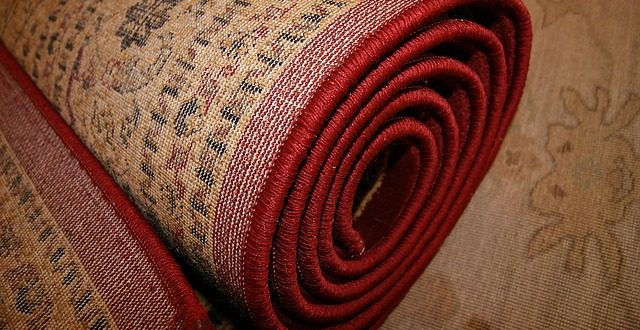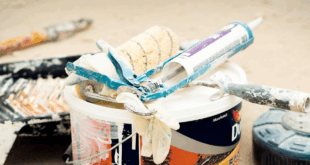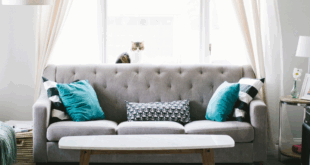Flooring finishes a room, it provides comfort and impact.
Real wood flooring
Adds warmth, richness colour and texture to a room, and looks better with age. You can choose between solid or engineered wood. Solid-wood floors often have a maximum plank width of 160 mm and are far more susceptible to shrinkage caused by changes in temperature. Solid wood is water resistant, but needs to be sealed if you’re planning to use it in a kitchen or bathroom.
Engineered wood flooring comprises of a layer of hardwood bonded to a base usually plywood, some have interlocking designs making installation easier. A choice of sizes with strip and plank designs are offered, various levels of the hardwood layer thickness are available up to 6 mm. The thicker this layer, the more times the floor can be regenerated by sanding. Choose engineered boards with a lacquered rather than oiled finish for kitchens and bathrooms. Hardwoods, including walnut, oak and maple, are more durable than softwoods like pine. Colours range from pale ash through to dark chestnut.
Expansion space is required around the perimeter of the floor, this is covered by beading on the skirting board. Lay on a purpose designed underlay. DIY installation is possible, but can be tricky around doors and obstructions. Purpose built door thresholds provide expansion space.
A pale wood lightens a dark room and makes it feel bigger, and a three-plank floor creates the illusion of space. Look for the Forestry Stewardship Council’s label on solid wood, which guarantees it comes from a sustainable source.
Laminate flooring
Laminate is a much cheaper alternative if you like the look of wood but not the price tag. It is made in finishes resembling the effect of everything from antique oak to bright pine as well as an increasing range of non wood designs. If you go for quality it will look better and last longer. Budget products may have a regular repeat. Laminate is suitable for use in every room, but needs a soundproofing underlay in upstairs rooms and a waterproof variety for kitchens and bathrooms. Unlike wood, it cannot be repaired if the surface is damaged.
The planks interlock so it’s fairly easily laid, like wood, space for expansion is needed.
Carpet flooring
Transform a room from a simple living area into a focal point for family and friends to gather. Apart from the obvious aesthetic values of carpet flooring, they all feel great to walk on and these days even with children and pets to worry about, today’s stain protection is extremely good.
When considering a new carpet, consider where and how often it is going to be used. You may wish to consider using area rugs over an otherwise plain tile or wood floor, instead of all carpet.
There is a wide price range, depending on the material; Nylon, Acrylic, Olefin, Polyester and Wool, on the weight, and on the construction. Any carpet labelled ‘Heavy Domestic’ should be able to cope with very busy areas of the house – such as a hall, landing or opening to a doorway. Traditional woven carpets can last a lifetime.
Underlay is as important as the carpet, for comfort and long life don’t compromise on quality. Professional installation is recommended.
Tile flooring
Hardwearing, suitable for under-floor heating and amazingly versatile. There are multiple choices, including: Natural stone, Limestone, marble and ceramic.
Natural stone tiles include limestone, marble and slate, or you can opt for man-made varieties, such as porcelain and ceramic. Limestone looks wonderful, is available in large slabs but stains easily; marble is enjoying a resurgence as it’s very tough, but can feel cold and is slippery when wet; slate is waterproof and is cheaper than other types of stone. Meanwhile, ceramic tiles are glazed, fired and available in a variety of colours and patterns, but are breakable; porcelain is virtually indestructible, imitates other materials (such as stone) and can be used indoors and out; mosaic tiles are made from tiny pieces of stone or ceramic, and sold in sheets.
Size does matter with tiles, the bigger, the better. Large tiles make a room look more spacious and using the same tiles on the walls and floors creates a fashionable, streamlined effect in a bathroom or wet room.
Tiles can be used in every room, but check first that the sub floor can take their weight. They can feel cold, so it’s a good idea to have under-floor heating installed at the same time. Choose a non-slip, textured surface if the floor is likely to get wet. Porcelain and frost-proof ceramic are the best bets for floors that continue straight out into the garden, as they both have the look of natural stone, but without the hassle.
Stone is porous and needs to be washed with a mild soap solution and sealed regularly to prevent staining. Ceramic and porcelain are often chosen instead as they’re virtually maintenance-free.
Vinyl flooring
Tough type of flooring that is easy to lay, easy to clean, warm underfoot and available in a variety of colours and patterns.
Available in tiles or sheets, vinyl can be moulded or printed to resemble other materials, such as wood or glass, and even water or sand. Cushioned vinyl is soft and comfortable to walk on. You can use it all round the house, though usually in kitchens and bathrooms as its waterproof. For Vinyl, remove scuff marks with a rubber, and keep clean with a mild soap solution.
Rubber flooring
Waterproof, non-slip, and comes in a range of fantastic colours. Available in tiles or sheets, rubber is smooth or textured with a studded pattern. It’s now possible to buy natural rubber, which is far more environmentally friendly than man-made. Smooth, sheet rubber has a seamless finish, whereas a textured finish will add interest to a plain room.
It is mostly used in kitchens, bathrooms, living areas and you could also try it in the garden as a funky alternative to paving. Being antibacterial, it’s also a good choice for playrooms. Treat with a proprietary cleaning product periodically.
Bamboo flooring
Rising in popularity as another cheaper alternative to wood, as it’s strong, stable and hard wearing. Bamboo is often seen as the flooring material of the future, being readily available and it naturally regenerates quickly into harvestable crops.
Flooring tips
- Put padding underneath furniture to prevent any scuffs or scratching. Use plastic, foam or fabric pads
- Indoor and outdoor mats help prevent markings and dirt being transferred onto floors and carpets
- Say no to stilettos – ban high heels from being worn on your floors
- Wipe up spillages on your carpet immediately with a dry or damp towel, and buy a decent carpet cleaner solution
 Homeowners Club If you are one of the 15 million homeowners in the UK, the free to join online Homeowners Club is for you.
Homeowners Club If you are one of the 15 million homeowners in the UK, the free to join online Homeowners Club is for you.








